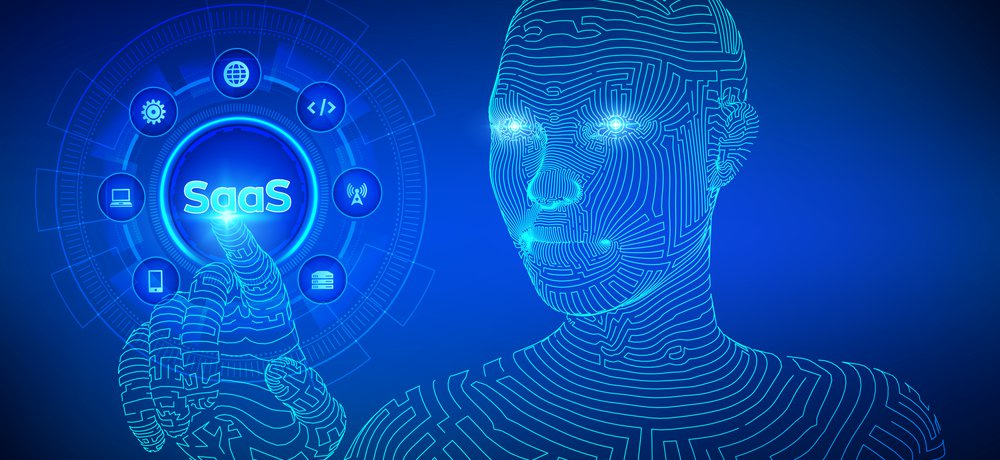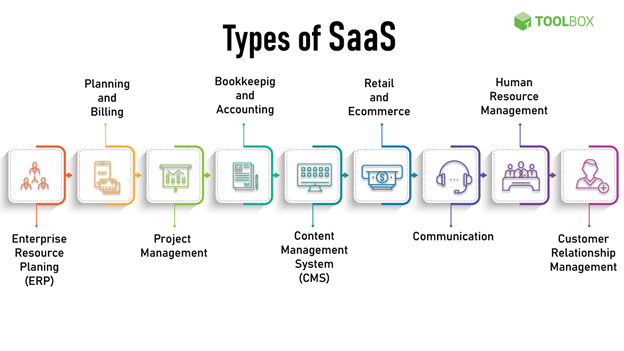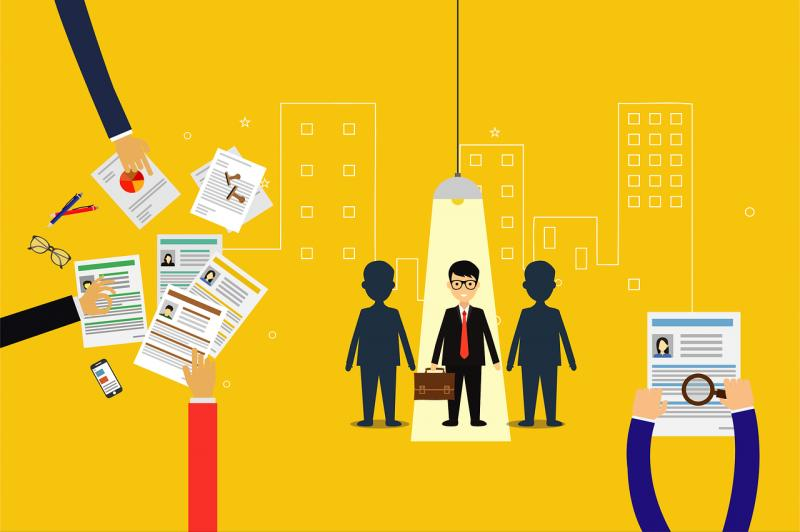SOFTWARE THAT DISMISSES YOU IS ALREADY A REALITY

We live in an extraordinary age of unstoppable technological progress, which has made concepts that were completely unknown just a few years ago commonplace. The term ‘software’ is now familiar to all schoolchildren and ‘lives’ in almost every home and pocket, ensuring the functioning of mobile phones, smartphones, laptops and other equipment.
The development of technology has led to the emergence of new services, such as SaaS ‘Software as a Service’, taking hold in the world of business and technology. SaaS applications provide companies and organisations with a flexible and efficient way to access, organise and analyse the data they need, while minimising the need for expensive hardware. However, with the rapid development of SaaS technologies and the use of artificial intelligence within them, questions arise as to how far we can go to replace humans in the field of automation, how safe it is in the context of privacy and human resource management.
SaaS stands for ‘Software as a Service’ and is a software distribution model in which applications are stored and managed in the cloud (remote servers) and users access them via the Internet. In this model, software is not installed on users’ local computers or servers, but is delivered as a service through a web browser. The advantages of SaaS include ease of use, automatic updates and maintenance, and the ability to access applications from any device with an Internet connection, which are often paid for in the form of monthly or annual subscriptions.
That is, to use a programme, you do not need to have downloaded it onto your computer, but simply access it remotely[1] . Examples of SaaS applications are cloud-based e-mail services, customer relationship management (CRM) systems, project management, web conferencing and many others. In each of these services, the software, in the cloud, collects all the information of all the employees, sorts it, evaluates the result, expresses opinions and, in the most modern software, continues the searches on its own The best known are: Gmail, Google Docs and Microsoft Office 365, Netflix, Amazon Web Services (AWS), Adobe Creative Cloud, Zoom, HubSpot and Dropbox[2] .

Some types of SaaS software[3]
This model has become very popular in the corporate environment, as it enables companies to use modern solutions without having to invest in hardware and IT support[4][5] . SaaS comprises many categories that can be used to perform the following functions[6] : Customer Relationship Management (CRM) – software that can store and structure order and customer information, optimise marketing, and improve sales and service quality; Project Management (PM) – comprehensive software that helps plan, monitor and manage projects, including cost estimation and risk calculation, communication, document management, and own and third-party records[7] .
In addition, the range of SaaS includes publicly available services such as video conferencing and data exchange, e-commerce, payment and billing and accounting. For the medical sector, there is software as a service in global coordination of electronic health records (EHR/EMR) – a collection, storage and processing of human health data, which has several characteristics of completeness and context of data[8] .
The SaaS offering is huge and finds customers in almost every sector: COVID-19 was a trigger point for the development of this service and accelerated the migration of companies from on-premises to the cloud, forcing employees to settle in the home office. The generalised shift to remote working and the introduction of social isolation measures have forced entrepreneurs around the world to transform their business models around online services, with many companies in the remote software services sector multiplying their profits[9] . The Software as a Service market is expected to grow to USD 232.3 billion in 2024, with a compound annual growth rate of about 17% compared to the previous period[10] .
Pros and cons

The use of SaaS in the corporate environment is phenomenal due to its cost-effectiveness and flexibility. A company does not need to invest initially in the purchase and maintenance of its own hardware and software components, it simply subscribes. The service providers themselves are responsible for the timely updating of the software, its proper maintenance and configuration, which allows the consumer to save money on IT support, but at the same time always use the current, established version of the ‘software’. Depending on the needs of the company, it is possible to add or reduce the number of software products used; furthermore, the subscription is often very flexible and the company can use a programme for a period of 1 month, without burdening itself with the purchase of a licence for years.
SaaS services have a faster integration into operations than traditional software and, thanks to being hosted ‘on the cloud’, can be accessed from anywhere, on virtually any device with an Internet connection[12] . Service as a Service allows companies to be more flexible to changes and more efficient in terms of process automation, as well as saving on software development and maintenance.
The biggest issue related to the use of services-as-a-service is that of security. Storing sensitive data in a cloud environment is a security risk, especially if the provider does not have sufficient security measures in place to protect the information: the service provider must have adequate security protocols in place to protect the data, and these are constantly evolving, as are the skills of those who ‘steal’ data. In the era of local software, organisations were secure in that the security of machines and working devices was controlled and the risk of an employee downloading malware was minimal or controlled. This is a fundamental aspect of security that is disappearing as employees use personal devices and move away from corporate networks.
An employee who wants to increase his productivity by working on SaaS application development uses a remote software product with his credit card and opts for any application instead of contacting IT. This is much easier than dealing with bureaucracy and the possible rejection of the application, but it poses a huge threat to the security of the corporate system, as it allows new applications to access corporate SaaS systems. Such connections, combined with customised settings, can affect an organisation’s sensitive data without there being any way to monitor or control the risk of an attack[13] .
SaaS is not available without the Internet, which makes offline work impossible, and the speed of working in the programme is directly proportional to the speed of the Internet connection. Moreover, the end user does not have the option of choosing a version that is more suitable for the job, the software will always be updated to the latest version and, despite the rapidly growing market, companies choose the right software from ‘availability’, which does not always fully meet the specific needs of individual companies: if you choose software that develops slowly, you have lost[14] .
Human Resources Management

SaaS-based human resources management[15]
Fortunately, we still live in a world where human beings rule. In economics, the term ‘human capital’ or ‘human assets’ is used to describe personal qualities that benefit the production process. Consequently, the control, accounting and management of this capital is a complex and labour-intensive process that falls under the remit of the human resources department. The function of the human resources department is to track the data of existing employees, which traditionally include personal history, skills, achievements and salary.
To reduce the manual burden of this administrative activity, which is present in every company, organisations have started to automate many of these processes electronically by implementing human resources management systems. The availability of SaaS has taken the accounting process to the next level, providing companies with products such as the Human Resources Management System (HRMS), Human Resources Information System (HRIS) and Human Capital Management (HCM). With the help of these software products, it is possible to recruit staff, monitor and manage staff performance and evaluate their efficiency, manage personnel data, payroll, work schedules, conduct training and track development, and computerise work climate analysis[16] . In essence, the human factor disappears, the company’s evaluation becomes a set of numbers, questions are answered by a chatbot, and the suitability of each employee is assessed by a machine[17] .
From now on, customer management becomes predetermined. Customers are not users, and if an employee is faced with customer relationship management, he cannot use his own expertise or imagination, but must apply solutions predetermined by the software[18] . If the operator fails, although the software is to blame, the human is considered by the software to be worthy of being fired.
AI versus humans?

Artificial intelligence vs. man[19]
Thanks to the ubiquitous ability of artificial intelligence (AI) algorithms to automate business processes, analyse and calculate large amounts of data, predict and advise, companies gain a cost-saving advantage and speed of decision-making and execution. A distinguishing feature of generative AI is its ability not only to store unlimited amounts of information and present it in a coherent and usable form, with a speed of information analysis that exceeds human capabilities, but also to create content and mimic human thought processes.
Artificial intelligence is able to perform a number of tasks that previously required human intervention, such as writing job descriptions, screening applications and CVs according to requirements, preparing interview questions, developing training programmes and materials, such as course outlines, job descriptions, safety instructions, drafting internal documents and more, which can make for many hours of work.
But what about functions such as hiring and firing, performance management, conflict resolution, idea generation and decision-making? These are functions that are governed by ethical issues and human factors. Artificial Intelligence purports to be neutral, but it is built and trained on existing data from a wide range of sources on the Internet, the completeness of which is very difficult to filter. Artificial intelligence can be equipped with racist and sexist information, resulting in racial and gender bias[20] . Or put an ageing segment of the workforce, people with special needs or limited skills in a vulnerable position.
For example, in relation to the gender pay gap, the situation can be exacerbated if payroll is entrusted to AI software in an uncontrolled manner, as the data it holds is information with past biases against women, ethnic minorities and other disadvantaged groups[21] . Moreover, AI only bases its algorithms on what is inherent to it; it is unable to take into account real and future events. This makes it impossible to replace human judgement, as the ‘blind’ use of AI software can lead to misleading, incorrect or out-of-date information, ignoring or overlooking important contextual details. Added to this, AI learns on large datasets, which are mostly in English, and can exclude people whose languages are very different from English[22] . So what?
It is difficult to say whether AI will completely replace business activities and human work or whether it will play a supporting role, facilitating human decision-making in the face of information overload and only taking over mechanical functions. Generative AI and its use in SaaS have great potential and can help in the routine aspects of work to free up time for human aspects that cannot be done by machines, thus enhancing creativity. Group communication, brainstorming, discussion and debate are all conducive to the emergence of truly good innovative ideas that are beyond the control of AI, whose capabilities are limited by algorithms and the amount of embedded data. If intelligent software is able to automate repetitive tasks, organisations will be able to channel employees’ creativity into more complex and meaningful activities that cannot be done simply by manipulating large databases.
Such reallocation can lead to important positive changes in human resources management policies and practices. Companies that successfully, competently and humanely implement these HRM tactics are likely to achieve significant success[23] . But in the case of SaaS and especially generative AI, the misuse in labour relations may affect perceptions of fairness, inequality and trust in management.
SaaS using generative artificial intelligence can disrupt business in general and the field of human resource management in particular. Such practices can affect all processes, from employee recruitment to performance management, and theoretically can improve productivity, fairness and efficiency, but only within the scope of what the machine has learned. The application of generative AI in human resource management involves significant ethical, moral, legal and social issues that require careful analysis and regulation by laws in order to achieve an effective balance. But who is able to control, restrain and punish a self-generating machine?
The effects of any new technology are not immediately obvious and only become apparent with time. A further uncertainty is the current state of development of generative AI, and it is important to determine the extent to which it has true autonomous intelligence, rather than a simple mechanical implementation of complex algorithms[24] . It is likely that the widespread adoption of AI-enabled software will be necessary to keep companies competitive in all sectors, but the results could be homogeneous and devalued, because the easier the process, the lower the value, and over time human labour will become an exclusive and valuable resource.
It is difficult to say whether AI will completely replace human work and decision-making or whether it will play a supporting role, facilitating human decision-making in the face of information overload, but I firmly believe that machines can be used by machines, but humans should continue to be used by humans.
USA029
[1] https://www.oracle.com/cis/applications/what-is-saas/
[2] https://habr.com/ru/companies/vdsina/articles/513942/
[3] https://stl.tech/blog/what-are-saas-software-as-a-service-applications/
[4] https://hurma.work/en/capabilities/hris/
[5] https://www.sap.com/germany/products/erp/what-is-erp.html#definition
[6] https://habr.com/ru/companies/first/articles/695036/
[7] https://pmpractice.ru/knowledgebase/gloss/detail/669.php
[8] https://habr.com/ru/articles/257241/
[9] https://www.linkedin.com/pulse/has-covid-19-made-saas-one-best-markets-work-jamie-hogg-1e/
[10] https://www.statista.com/statistics/505243/worldwide-software-as-a-service-revenue/
[11] https://www.flexera.com/blog/it-asset-management/saas-management-and-risk-what-financial-institutions-need-to-know/
[12] https://www.linkedin.com/pulse/pros-cons-using-saas-your-business-needs-saqib-aziz/
[13] https://thehackernews.com/2023/04/uncovering-and-understanding-hidden.html
[14] https://cleverics.ru/digital/2019/12/vse-chto-vam-nuzhno-znat-o-saas/
[15] https://www.openpr.com/news/2289544/saas-based-human-resource-market-giants-spending-is-going
[16] https://techexpert.ua/ru/what-is-the-hrms/
[17] https://happy-job.ru/hr-blog/avtomatizaciya-hr-processov/
[18] https://www.linkedin.com/pulse/why-b2b-saas-employee-experience-so-bad-robert-fein/
[19] https://www.vectorstock.com/royalty-free-vector/artificial-intelligence-vs-human-and-job-vector-27223795
[20] https://www.degruyter.com/document/doi/10.18574/nyu/9781479833641.001.0001/html
[21] https://link.springer.com/article/10.1007/s11199-012-0165-z
[22] https://onlinelibrary.wiley.com/doi/full/10.1111/1748-8583.12524
[23] https://www.nytimes.com/2023/04/22/opinion/jobs-ai-chatgpt.html
[24] https://onlinelibrary.wiley.com/doi/full/10.1111/1748-8583.12524




Leave a Reply